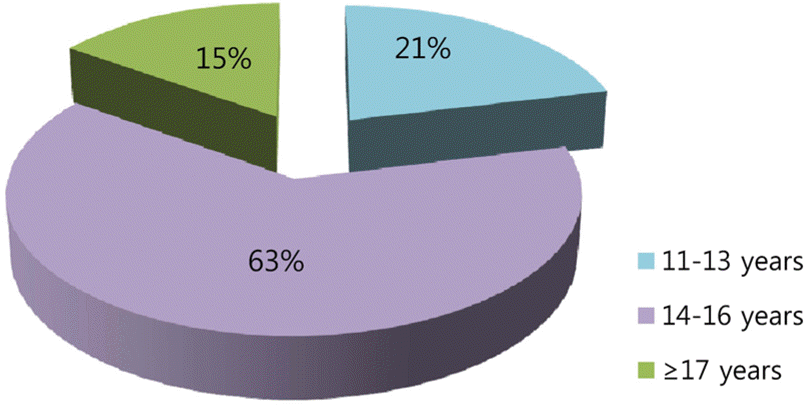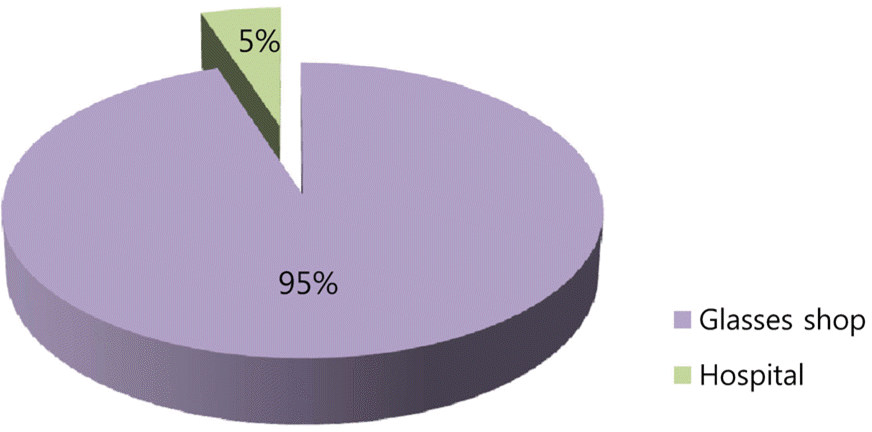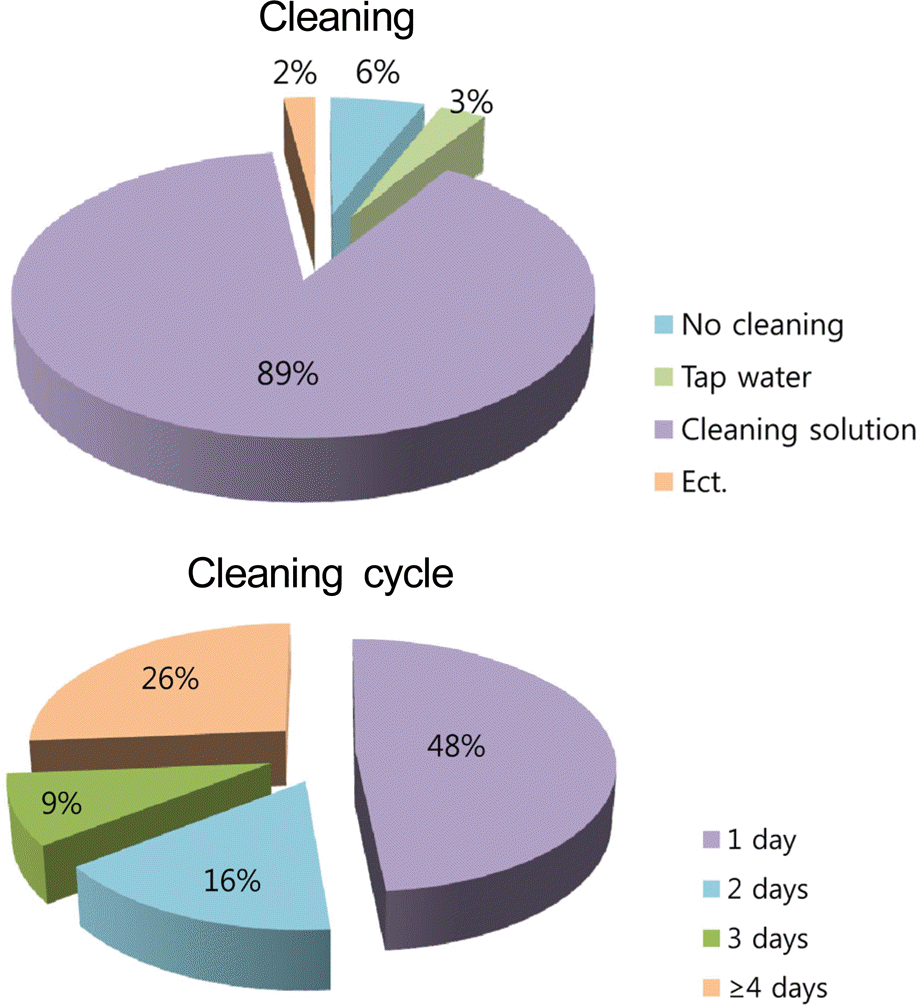Abstract
Purpose
The present study was conducted to gather valid data for promoting public eye health among adolescent contact lens wearers by investigating the current practices of contact lenses wearers.
Methods
A questionnaire regarding use and care of contact lenses was distributed to middle and high school students. A total of 920 students (472 males, 448 females) were enrolled and the purpose of the study was explained to the students.
Results
Among all student, 49% had myopia (male 44%, female 54%) and 12% hyperopia (male 12%, female 13%). In ad-dition, 70% of the subjects chose to wear glasses for vision correction, 27% (male 4%, female 50%) reported they have worn contact lenses and 64% of those were soft contact lenses. The age for starting contact lenses was between 14-16 years of age (63%). Most students (95%) purchased their contact lenses from an optical store. Many (89%) cleaned the contact lenses with cleaning solution on a daily basis, however, only 25% of the students received instructions on how to clean the lens properly. Common complaints associated with use in descending order were hyperemia (31%), foreign body sensation (19%), tearing (16%), pruritis (13%), and keratitis (9%). The subjects reported that the main cause of complications was due to the users’ lens handling (93%).
References
1. Shin YJ, Moon JW, Wee WR.Corneal neovascularization and cor-neal hypesthesia as contact lens complications. J Korean Ophthalmol Soc. 2006; 47:25–30.
2. Park SJ, Lee SM, Kim MK. . Cosmetic contact lens-related complications: 9 cases. J Korean Ophthalmol Soc. 2009; 50:927–35.

4. Shin KH, Kang JS.Complicated corneal disorders secondary to contact lens wearer. J Korean Ophthalmol Soc. 1985; 26:657–62.
5. Seol CR, Kim MS, Kim JH.Corneal complications of contact lens wearer. J Korean Ophthalmol Soc. 1989; 30:363–7.
6. Lee DK, Choi SK, Song KY.Clinical survey of corneal complica-tions associated with contact lens wear. J Korean Ophthalmol Soc. 1994; 35:895–901.
7. Dong EY, Kim EC.Results of population - based questionnaire on the symptoms and lifes tyles associated with contact lens. J Korean Ophthalmol Soc. 2001; 42:30–35.
8. Choi TH, Kim HM, Cha HW. . Research on the current status of contact lenses in Korea. J Korean Ophthalmol Soc. 2004; 45:1833–41.
9. Choi TH, Kim HM, Tchah HW. . Research on the actual educational condition of contact lens in Korean ophthalmology resi-dency training hospitals. J Korean Ophthalmol Soc. 2004; 45:1438–45.




 PDF
PDF ePub
ePub Citation
Citation Print
Print







 XML Download
XML Download